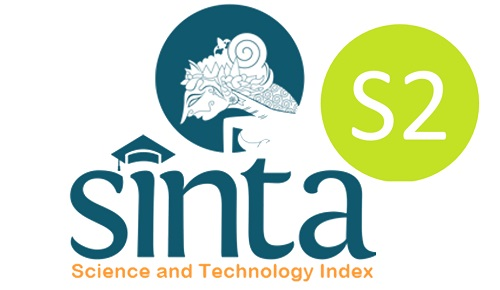AN ANALYSIS OF STUDENTS’ FREE WRITING
DOI:
https://doi.org/10.22373/ej.v1i2.188Keywords:
Free writing, grammatical errors, writing implicationAbstract
Writing contains a compound process to be expressed that entails the writer to pay more attention on linking appropriate words together. Most linguists agree that a writer should attain high level of understanding to pursue the lifelong learning of academic writing pedagogy. This study aimed to analyze the students’ free writing by identifying the category of mistakes that often appear on their writing assignment. 28 free writings were collected, as the main data, from 28 students as the samples for this study. They were then analyzed by using the guidelines of correction symbols from Hogue (1996) and Oshima & Hogue (1999). The results revealed that 11 categories of grammar that often applied incorrectly on the students’ free writing. The misused of verb-agreement (V/A) was the most frequent category occurred, followed by word form (Wf) and Spelling (Sp). The least category of errors identified on the students’ free writing was conjunction (Conj) and wrong word (Ww) categories. Overall, 175 errors from different grammatical conventions were repeated in the students’ free writing.Downloads
References
Anas, S. (2008). Pengantar Statistika Pendidikan. Jakarta: Raja Grafindo Persada.
Brown, H. D. (2004). Language assessment: Principles and classroom practices. New York: Longman.
Crinon, J., & Marin, B. (2010). The role of peer feedback in learning to write ex-planatory texts: why the tutors learn the most. Language Awareness, 19 (2): 111-128.
Gilmore, A. (2009). Using online corpora to develop students’ writing skills. ELT journal, 63 (4): 363-370.
Harmer, J. (2007). The practice of English language teaching (4th Eds). Harlow: Pearson Education Limited.
Hedge, T. (2000). Teaching and learning in the language classroom. Oxford: Ox-ford University press.
Hogue, A. (1996). First steps in academic writing. New York: Longman.
Kadesch, M. C., Kolba, E. D., & Crowell, S. C. (1991). Insights into academic writ-ing: Strategies for advanced students. New York: Longman.
Le, K. N., & Tam, V. W. Y. (2001). A survey on effective assessment methods to enhance student learning. Australasian Journal of Engineering Education, 13 (2): 13-20.
Leonhard, B. H. (2002). Discoveries in academic writing. Singapore: Heinle & Heinle.
Lilis, T. (2003). Student Writing as ‘Academic Literacies’: Drawing on Bakhtin to Move from Critique to Design. Language and Education, 17 (3): 192-207.
Nunan, D. (1999). Second Language Teaching and Learning. Florence, KY: Heinle & Heinle Publishers.
Oshima, A., & Hogue, N. (1999). Writing Academic English (3rd Eds). New York: Longman.
Schleppegrell, M. J. (2004). Technical writing in a second language: The role of grammatical metaphor. In Ravelli, L. J., & Ellis, R. A. (Eds). Analyzing academic writing: contextualized framework. 172-189. London: Continuum.
Shields, M. (2010). Essay writing: A student’s guide. London: SAGE Publications.
Downloads
Published
Issue
Section
License
Proposed Policy for Journals That Offer Open Access
Authors who publish with Englisia journal agree to the following terms:
- Authors retain copyright and grant the journal right of first publication with the work simultaneously licensed under a Creative Commons Attribution License that allows others to share the work with an acknowledgement of the work's authorship and initial publication in this journal.
- Authors are able to enter into separate, additional contractual arrangements for the non-exclusive distribution of the journal's published version of the work (e.g., post it to an institutional repository or publish it in a book), with an acknowledgement of its initial publication in this journal.
- Authors are permitted and encouraged to post their work online (e.g., in institutional repositories or on their website) prior to and during the submission process, as it can lead to productive exchanges, as well as earlier and greater citation of published work (See The Effect of Open Access).









